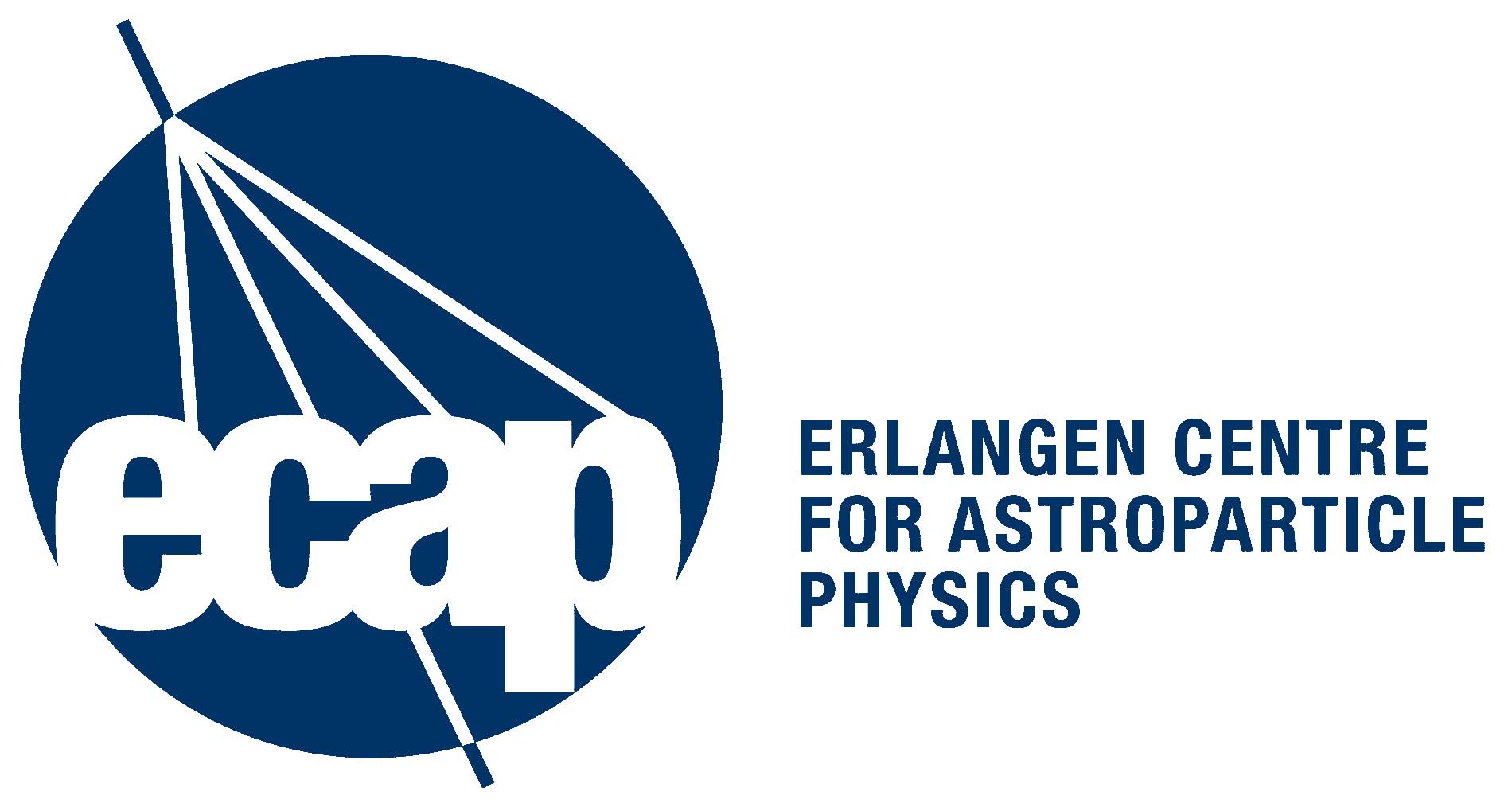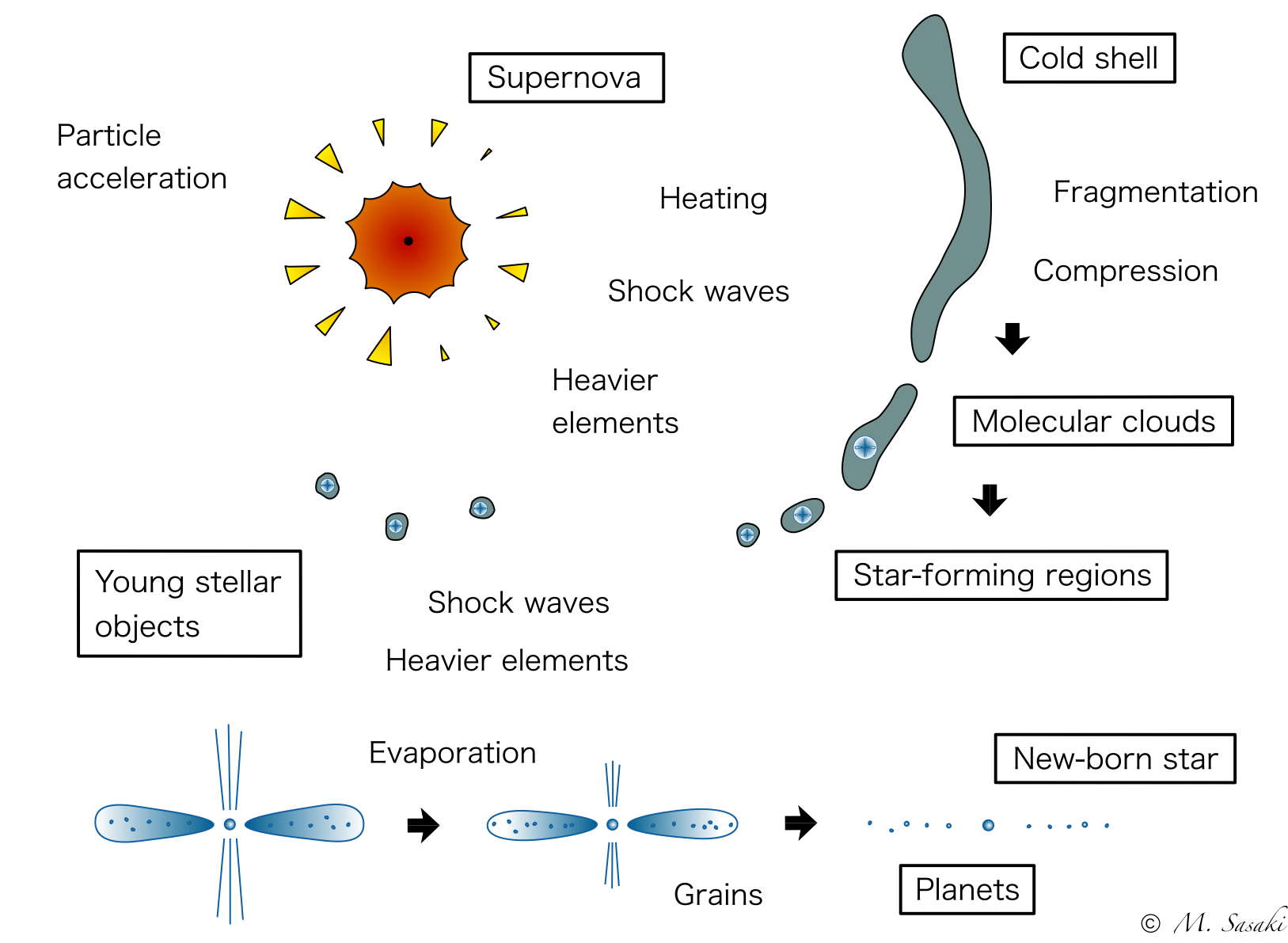

Dr. Karl Remeis-Sternwarte
Friedrich-Alexander-Universität Erlangen-Nürnberg
Sternwartstraße 7, D-96049 Bamberg, Germany



|
Prof. Dr. Manami Sasaki Dr. Karl Remeis-Sternwarte Friedrich-Alexander-Universität Erlangen-Nürnberg Sternwartstraße 7, D-96049 Bamberg, Germany 
|
Projects
X-ray binaries in nearby galaxies
X-ray binaries (XRBs) are binary systems consisting of a star and a neutron star (NS) or a stellar black hole (BH), in which the NS or the BH accretes matter from the companion. XRBs are among the brightest X-ray sources in normal galaxies. The X-ray luminosity functions (XLFs) for point sources in galaxies are thus dominated by their XRB population. X-ray binaries can be divided into low-mass X-ray binaries and high-mass X-ray binaries, depending on the mass of the companion star. Different XRB populations in galaxies indicate different stellar population, thus different star formation histories in these galaxies. We study the X-ray population in nearby galaxies (the Magellanic Clouds, M31, M33, M83, NGC 1512/1510). The identification of X-ray sources allows to investigate the XRB populations and carry out comparative studies between different galaxies based on reliable star formation history constraints from resolved stellar populations.
Supernova remnants
In supernova (SN) explosions at the end of the life of a star, large amount of energy is released and transferred to its surroundings. Stellar matter is expelled with a velocity on the order of 10 000 km s^-1, and the initially spherically expanding shock wave produces a cavity filled with low density, high temperature (10^6-10^7 K) gas called the supernova remnant (SNR).
While the synchrotron emission from relativistic particles accelerated in the
shocks of SNRs are mainly observed in radio, the hot interstellar gas shocked by SN explosions as well as the expelled ejecta are best studied in soft X-rays. A large number of SNRs in the Milky Way and nearby galaxies has been observed in X-rays and a considerable progress has been made in the understanding of their physics. In particular, the X-ray telescopes Chandra and XMM-Newton enable us to carry out spatially resolved spectral analysis of SNRs with improved spectral resolution and to achieve more accurate measurements of physical parameters inside SNRs. We perform observations of SNRs in our Galaxy and in nearby galaxies (the Magellanic Clouds, M31, M33) in X-rays and in other wavelength bands. These studies give clues to, e.g., the physical state of the plasma in SNRs, the local variation of chemical abundances and/or ionisation states in SNRs, differences in initial explosion energies, the influence of SNRs on the interstellar medium (ISM), or the acceleration of particles in the strong shocks of the SNRs.
The hot interstellar medium
Massive, early-type stars inject energy and matter to the ambient ISM through their radiation, stellar winds, and finally by supernova explosions. As these processes are often correlated in space and time, superbubbles with sizes of typically 100-1000 pc are created in the ISM. Shocks of massive stars and SNRs colliding with superbubble shells produce high-density layers that fragment into clouds, which can evolve into new sites of star formation. Therefore, SNRs and superbubbles are among the prime sources controlling the morphology and the evolution of the ISM, and their observation is of key interest to the understanding of the galactic matter cycle. Combining radio, infrared, and optical data of the cold and the warm phases of the ISM with X-ray data, we investigate SNRs and the hot plasma in superbubbles in our Galaxy and the Magellanic Clouds to improve our understanding of the physical properties and the evolution of the ISM.
Supernova remnants and star formation
Stars typically form out of cores of molecular clouds due to gravitational collapse of the clouds. In addition, external pressure caused by shock waves of stellar winds or supernovae are believed to be important mechanisms to trigger star formation. Since massive stars with masses higher than 8 M_sun evolve very fast and die in supernovae only after few 10^6 years, core-collapse supernovae of massive stars are often found in regions with active star formation. Therefore, if SNRs, which can only be observed up to an age of around 10^5 years or less, are observed near young stellar objects (YSOs), these SNRs have most likely resulted from the same generation of stars as the YSOs. Instead of being the agent for the onset of star formation, shock waves of SNRs observed near star-forming regions might show interaction with the existing YSOs.
In the Galactic SNR CTB 109, which is host to the anomalous X-ray pulsar 1E 2259+586 we found molecular clouds around the interior X-ray bright region called the Lobe. There is also an associated IR source, which was resolved into point sources in the near-IR. We discovered likely YSOs among them. We search for YSO candidates in SNRs like in CTB 109 and investigate the IR spectrum and high-resolution spectra in the near-IR and optical to study the accretion and outflow of these YSOs and the possible impact of the SNR shocks on star and planet formation.

|